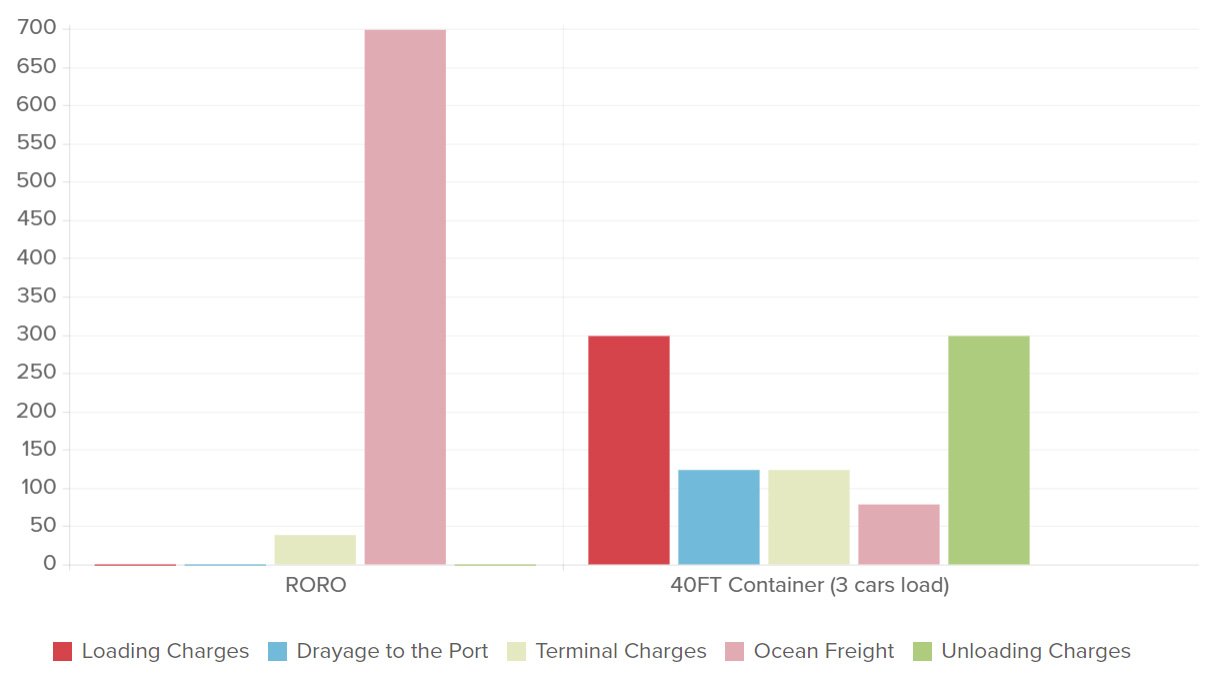
The car is shipped via a Ro/Ro or Hybrid Container CON/RO freighter.
You drive the vehicle directly to the place of shipment (port), where it is then driven by the port staff into the cargo ship and lashed. For safety reasons, you cannot be present at the loading itself (unless you travel with the cargo ship, e.g. Grimaldi).
At the destination, the vehicle is driven out again by a port employee and parked in the port area or in a depot. Customs will be carried out directly at the depot. Depending on the country of entry, a quarantine check follows. The customs officer usually check the chassis no. and engine no., but sometimes also the contents of the car. After inspection by a customs officer, the vehicle can be picked up by its owner and driven out of the area.
The car is shipped via a container or Hybrid Container CON/RO freighter.
You drive the vehicle to a depot and either load the car yourself into the container or let your vehicle being lashed and loaded inside the container by the freight forwarder. This is also different, depending on the freight forwarder and should be clarified in advance.
Attention: High quality lashing material is very expensive and you should also make sure that it is included in the price.
After the vehicle has been loaded into the container, the container is sealed. The seal contains a unique number, which must later be written on the Bill of Lading. In order to find the container later (in case it is lost at a port of transhipment), you should photograph the container (container no., shipping company, color) and also the seal number. Usually, this part carried out by freight fowarder. The container is then transported by truck to a container port. The container is loaded onto the cargo ship by crane.
Depending on the cargo, it may happen that the container changes position on the cargo ship several times during the shipping period, as cargo ships often have to balance their cargo. Open-top containers are always stored at the top and outside on the freighter and usually get a lot of salt (especially in stormy seas).
Conclusion: Oversized vehicles way better to get shipped by Ro/Ro.
For certain routes, containers even change the cargo ship and are reloaded again. Any transhipment carries the risk that the container will arrive later or even be lost. If there is a high probability that the container will be transhipped, a total loss Insurance is recommended. As soon as the container arrives at its destination, it is hoisted back to the port area by crane and driven by truck to a depot. The depot can be located in the port or far outside (depending on the shipping company and agent). Customs will be carried out directly at the depot. Depending on the country of entry, a quarantine check follows. The customs officer usually check the chassis no. and engine no., but sometimes also the contents of the car. After inspection by a customs officer, the vehicle can be picked up by its owner and driven out of the area.